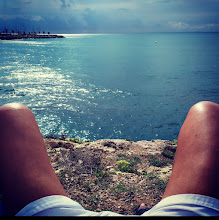domingo, 18 de agosto de 2024
ORAZIO GENTILESCHI 1563-1639 Pisa-London
Orazio Lomi Gentileschi (1563–1639) was an Italian painter. Born in Tuscany, he began his career in Rome, painting in a Mannerist style, much of his work consisting of painting the figures within the decorative schemes of other artists.
After 1600, he came under the influence of the more naturalistic style of Caravaggio. He received important commissions in Fabriano and Genoa before moving to Paris to the court of Marie de' Medici. He spent the last part of his life at the court of Charles I of England and died in London. He was the father of the painter Artemisia Gentileschi.
Life
Gentileschi was born in Tuscany, the son of a Florentine goldsmith called Giovanni Battista Lomi, and baptised at Pisa on 9 July 1563. He later took the name Gentileschi from an uncle with whom he lived after moving to Rome [1]: p.6 in either 1576 or 1578.[2]
Early years in Rome
Much of Gentileschi's early work in Rome was collaborative in nature.[2] He painted the figures for Agostino Tassi's landscapes in the Palazzo Rospigliosi, and possibly in the great hall of the Quirinal Palace, although some authorities ascribe the figures there to Giovanni Lanfranco.[3] He also worked in the churches of Santa Maria Maggiore, San Nicola in Carcere, Santa Maria della Pace and San Giovanni in Laterano.
Influence of Caravaggio
Danaë by Orazio Gentileschi
From around 1600, Gentileschi's style was transformed by his contact with Caravaggio[1]: p.8 —several years his junior—who was then in Rome. In late August 1603, Giovanni Baglione filed a suit for libel against Caravaggio, Gentileschi, Ottavio Leoni, and Filipo Trisegni in connection with some unflattering poems circulated amongst the artistic community of Rome over the preceding summer. Caravaggio's testimony during the trial as recorded in court documents is one of the few insights into his thoughts about the subject of art and his contemporaries.[4] After Caravaggio's flight from Rome, Gentileschi developed a more personal Tuscan lyricism, characterized by lighter colours and precision in detail, reminiscent of his Mannerist beginnings.
In 1611, Gentileschi collaborated with Tassi again, on works including the decorations of the Casino delle Muse. However, their association ended due to a dispute over money.[2] In 1612 he was again called to the Tribunal of Rome, this time to speak against Tassi, who was charged with the rape of his daughter Artemisia Gentileschi.
Suscribirse a:
Enviar comentarios (Atom)
MARTIN RIDGWELL 1964 London
Sobre l'artista Martin Ridgwell és un artista gravador que viu i treballa a Londres. Va estudiar la seva llicenciatura en Belles Arts ...

-
“THE UNBEARABLE INDIFFERENCE” BY MIGUEL TADEO, NEW LGTBIQ EXHIBITION OF TRANSSEXUALIA IN CASA DE VACAS TRANSEXUALIA.ORG • JUNE 28, 2024 •...
-
weyrhere - weyrq nsfw X https://twitter.com › weyrhere Art! This is the NSFW account. I use AI tools and digital painting, no images ar...
-
PEREZ MARQUEZ GERMA 1966 - September 29, born in Frankfurt, Germany. 1976_ Installs in Ayamonte, with his family. 1979_ begins to receive...






































No hay comentarios:
Publicar un comentario